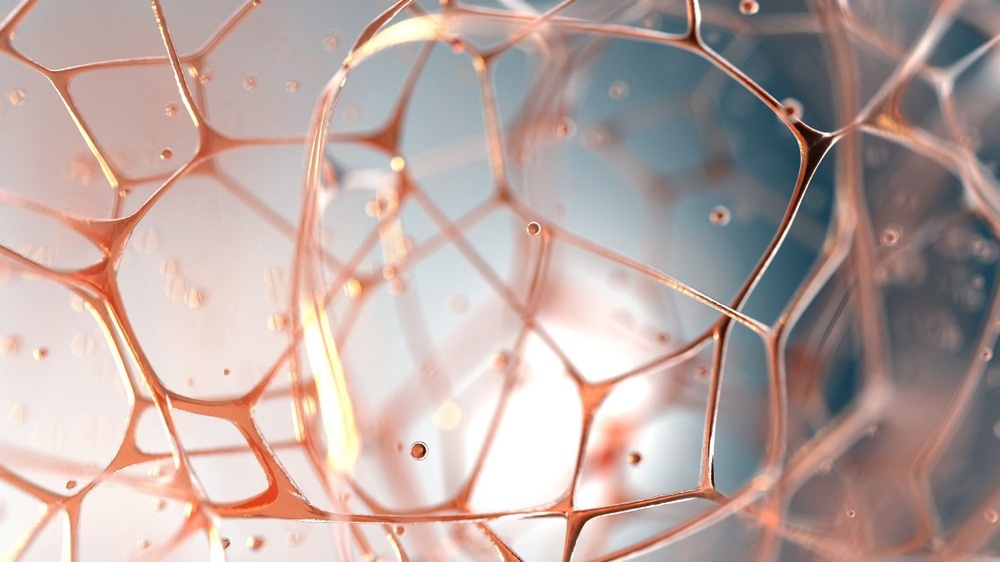Digital volume correlation (DVC) based optical coherence elastography (OCE) generates micron and submicron-scale images of biological tissue. However, the results are unreliable due to optical coherence tomography's low-quality speckle patterns. A study published in Photonics suggests a new effective image assessment index based on OCT-DVC that enhances the OCE system and the development of new DVC-OCE algorithms.

Study: Image Quality Assessment for Digital Volume Correlation-Based Optical Coherence Elastography. Image Credit: Photobank gallery/Shutterstock.com
Significance of Optical Coherence Elastography
Optical coherence elastography, an optical elasticity imaging technique, focuses on biomechanics assessment of micro-scale tissue in 3D, which is challenging to perform with traditional elastographic methods.
Due to its excellent resolution in the mechanical characterization of living tissue, optical coherence elastography shows significant promise for the early identification of many diseases. The first optical coherent elastography approach was proposed in 1998 and is still frequently used today. Speckle correlation-based optical coherence elastography methods can characterize the deformation in two or three dimensions at the same time.
The latest correlation-based optical coherent elastography technique is digital volume correlation (DVC), which can measure strain and displacement in any direction. The DVC computation is independent of the OCT speckle pattern's correlation status or properties. However, they can affect the result. In addition, measurement errors can occur due to a poor correlation between speckle patterns during deformation.
Therefore, qualifying the OCT images before DVC computation is essential for obtaining reliable deformation measurement results and identifying incorrect results.
Limitations of Optical Coherent Elastography
Most OCE's correlation algorithms are directly derived from digital volume correlation (DVC) or digital image correlation (DIC). However, the correlation coefficient is not an effective measurement for estimating the efficacy of the outcomes since its values differ depending on the calculation algorithm used.
Numerous variables affect the DVC method's accuracy, including the sub-voxel and whole voxel registration algorithm, interpolation scheme selection and shape function. In addition, speckle noise is a feature of OCT images that degrades contrast and obscures the fine details of biological tissues.
The tissue's speckle pattern distortion brings about a substantial rise in measurement errors. Therefore, speckle correlation-based optical coherent elastography requires a standard to assess the image quality to guarantee proper correlation computation.
In most circumstances, the exact optical characteristics of biological tissue are unknown, and the amplitude of speckles' distribution is difficult to quantify. Therefore, a new evaluative standard is required to assess optical coherence tomography images for speckle correlation-based optical coherence elastography.
The OCT's parameters, such as the laser's central wavelength, the scanning lens's numerical aperture, and the reference arm's laser intensity, significantly impact the OCT image quality.
Therefore, an OCT image quality assessment standard is required to determine the link between various elements and the precision of the DVC-OCE methodology.
Using Image Evaluation Index for OCT Images
This study employs an image assessment index for OCT-DVC based on OCT signal attenuation characteristics and gray level information for the DVC-OCE process direction. In addition, careful consideration is given to the attenuation, width and dispersion properties of the OCT image.
The inverse compositional Gauss-Newton DVC and the full-search zero-mean normalized cross-correlation algorithms helped the step-based research. To validate the validity and efficacy of the new parameters, numerical sub-voxel translation was performed for phantom experiments with various reference arm circumstances and parameters.
The virtual deformation experiments with phantoms using numerically applied displacements were carried out, and the deformation of tissues was measured.
Important Findings of the Study
A novel CMGG quality index was proposed, which combines the global mean attenuation intensity, the dispersion and width of grayscale distribution, and other contributing elements. The new image quality index was validated by simulation and phantom image experiments.
The findings suggest that the proposed CMGG is effective as it is close to the mean measured displacement. This index specifies the criteria for determining if OCT images are appropriate for DVC computation.
Based on this index, a pretest review during DVC-OCE measurement will save significant time from processing poor-quality photos. In addition, this index can be used to identify sites where 3D displacements are not computed correctly.
The fewer the mean bias errors generated by the OCT image, the greater the CMGG. Therefore, a good OCT image will have a large CMGG.
This research validates the index's validity using biological tissue deformation data and demonstrates that the index can assess errors before deformation measurements.
The proposed evaluation index will use future optical coherent elastography system improvement to increase OCT image quality and identify high-quality seed areas for new DVC algorithm development.
Reference
Lin, X., Chen, J., Hu, Y., Feng, X., Wang, H., Liu, H., & Sun, C. (2022). Image Quality Assessment for Digital Volume Correlation-Based Optical Coherence Elastography. Photonics. https://www.mdpi.com/2304-6732/9/8/573/htm
Disclaimer: The views expressed here are those of the author expressed in their private capacity and do not necessarily represent the views of AZoM.com Limited T/A AZoNetwork the owner and operator of this website. This disclaimer forms part of the Terms and conditions of use of this website.